Posts Tagged landscaping
Xeriscape Landscaping in Sonoma County
 Xeriscape Why?
Xeriscape Why?
Xeriscape became a word invented by Denver Water Department when forbidding watering in summer. Sonoma residents must:
- select plants appropriate to your climate,
- mulch plants to help them retain moisture
- care for your plants properly
- keep plants healthy
- Plant shrubs, trees and other attractive plants where grass used to be.
The foregoing basics reduce water consumption 60 percent. Instead of a monotonous expanse of lawn in shades of green to brown, your yard can become rich with variety and interesting to observers. Filling your yard with a variety of hardy drought tolerant plants indigenous to your area is making a pact with Mother Nature that you are on her side. You are now going to help her with a bounty of beautiful plants she worked over 1,000 years to perfect for your exact piece of land.
Prepare the Yard Soil
- Pick up a fistful of thoroughly wet soil from your yard and squeeze it into a ball. The ball will stay formed or will crumble apart.
- Add organic material to your soil if the ball of dirt crumbled quickly. Compost or manure helps crumbly soil retain moisture.
- Add sand or ground bark to the soil if the ball of dirt formed a tight, hard ball. Hard, clay soil allows all water to run off quickly before it even has a chance to reach a plant’s roots.
Grow Plants Nature Designed for Sonoma
- Grow plants native to the Sonoma parched earth. They adapted mechanisms over hundreds of years to tolerate and cope with your weather and water gauge, so require little watering. Landscape companies can recommend plants for you so that your unique taste can still be displayed in your xeriscape garden.
- Plant trees suited to dry landscaping, such as California buckeye, which though their seeds are poisonous, make great shaped trees. The U.S. Department of Agriculture plant hardiness dictates zones 6a and higher for Sonoma.
- Plant drought-tolerant xeriscape shrubs like California wild lilac, best in USDA zones 5b or higher with lovely flowers. California wild lilac can grow in either full sun or partial shade.
- Choose drought-tolerant ornamental grass like blue lyme for full sun or light shade. This clumping grass is very hardy, with gray-blue foliage and grows up to 4 feet tall with very little water.
- Plant xeriscape succulents in your hard that will store water in fleshy leaves and need little water from you. The Century plant, or Agave Americana, grows well in USDA Zones 9a through 11 in full raging sun or a little shade. Reaching 8 feet in height and 12 feet wide. They provide a focal point if you just make sure you have a safe distance between its spiny leaves and foot traffic.
Follow Xeriscape Principles
- You must cover your entire garden with a layer of mulch or compost so that the need for moisture due to evaporation is nil. Compost has nitrogen, giving plants nutrition and improving texture of your xeriscape yard soil.
- Water in early morning or evening to minimize any evaporation. Drip irrigation systems are the most effective method for Sonoma.
List of Zero to Low Water Need Plants for Sonoma Area
There are many drought tolerant plants needing no supplemental summer water once established. While these are uber-drought tolerant xeriscape plants, some will do a bit better with some water. Some fine shrubs that meet these criteria are:
- Arbutus Onedo
- Acca Sellowiana
- Baccharis Pilularis
- Buxus
- Callistemon spp.
Contact your local landscape company to learn the multitude of xeriscape plants that can beautify your home without watering!
Firewood: Harwood vs. Softwoods?

Nothing sets the holiday mood than having a brightly burning fire complete with crackling sounds and fixating flames, to not only warm your home but your soul as well. But not all wood is created equal. Creating a great fire relies on great firewood, and it makes the choice more difficult with so many options available.
When trees are first cut down, they are full of moisture. It’s important to understand that all firewood needs to be properly seasoned, which is to say that it needs to have low moisture content. Well seasoned firewood is easier to start, produces more heat, and burns cleaner.
What’s Better: Hardwoods or Softwoods?
Hardwoods are dense and pack more heat per volume of firewood. This is why they tend to be the best options for burning. The only con to hardwoods is that they are difficult to light. That’s why many people will use softwoods to get the fire going.
Softwoods are less dense and ignite quickly, but they don’t provide long-lasting heat and warmth. They give off soot and creosote which line your chimney, which is a source of chimney fires. Whenever possible, avoid using softwoods in your fireplace. They may be great around a campfire, but they are the last thing you want in your home chimney.
Hardwoods
- Oak: Oak is abundant in the U.S. and considered one of the best picks for firewood. When it’s dried properly, it will burn for hours and produce warm heat. The key is that it needs to be seasoned properly. Oak firewood should be aged in a dry area for at least six months. Oak is difficult to light, but once started, it will offer a long-burning fire.
- Hickory: Hickory can be difficult to split, but once you have this part covered, it burns just as beautifully as oak.
- Ash: Some argue that ash is the best firewood to burn. Ash splits easily and has a low moisture content, which is why people love it.
- Maple: Hard maple produces a slow-burning fire because it’s very dense and heavy. Soft maple is also a suitable choice for firewood. It’s easy to burn with no heavy smoke.
- Birch: Birch is an attractive choice for firewood because it gives off a lot of heat, but the drawback is that it burns quickly. If you find bundles of birch, you’ll probably notice that it’s cheaper than other woods. Just remember that you will burn through more of it, so it’s best to mix in birch with slow-burning firewood like oak.
- Apple: Apple trees aren’t just valued for their apples. They also produce great wood for burning since it has a pleasant smoky aroma and generates little smoke.
Softwoods
- Pine: Pine is readily available, especially because it seasons faster than other wood varieties, and it’s easier to split and light. Pine is a great wood to start a fire with, but it’s not the best to continue with. Pine burns very quickly and has sap pockets that can explode, causing creosote buildup in the chimney.
- Fir: Fir produces sparking just as pine does, but the older trees are easy to split and start. Fir firewood also gives off an ample amount of heat, although not as much as the hardwoods.
Let’s hear from you. What’s your favorite wood to burn?
Harvesting Your Vegetables

As the fall gardening season comes to an end, it’s definitely time to think about processing and storing the harvest. From roasted pumpkins/squash, steaming kale, to making delicious soups and stews, you’ll probably have plenty of delicious vegetables to keep you busy processing and freezing for weeks to come. Here are some tips from DK Landscaping on harvesting and storing those vegetables you grew this summer and fall:
Pumpkins and Squash – These vegetables are best harvested when the vine has dried up. If you’re threatened by frost, be sure to cover the vegetables with a blanket overnight. They’re delicious in soups, desserts and main entrees, and they can be processed immediately or stored in a cool, dry, dark environment for up to 8 months.
Leafy Vegetables – Kale, spinach, collard greens and cabbage are great growers during the fall months and often will survive a light frost. Pick the leaves when they’re young and tender, as they’ll taste better. Serve immediately or store in a cool setting for up to a week. Cabbage can be steamed and frozen or pickled for serving later in the year.
Root Vegetables – If you planted a second crop of radishes, carrots, beets or parsnips this fall, you can keep them in the ground until they reach the size you desire for eating. They’ll survive until the ground freezes hard, but typically are picked before then because they’re not as tasty when overgrown. These vegetables will keep in the refrigerator for a week, so be sure to plan them into your weekly menus shortly after picking them.
If you are already thinking ahead to your harvest for next summer, this is the perfect time to plant garlic. Wait until the first frost has passed, because you want the soil to be a bit cooler. The bulbs will thrive in the winter and produce beautiful large bulbs to be picked in the summer.
For more information about your harvest, contact DK Landscaping.
Guide to a Bountiful Autumn Garden
For Californians, Labor Day generally marks the end of Summer… and the welcoming of Fall. It hardly seems logical to discuss Fall planting when temperatures feel like Indian Summer, but the calendars show that now, is is the right time to begin your plans for an autumn garden.
of Summer… and the welcoming of Fall. It hardly seems logical to discuss Fall planting when temperatures feel like Indian Summer, but the calendars show that now, is is the right time to begin your plans for an autumn garden.
In most areas planting should take place from July through August to allow for plenty of time for seeds and plants to grow and mature before the first autumn freeze.
Here is a list of the hardiest vegetables for cool-weather gardens:
- Arugula, from 21 to 40 days (baby or mature leaf size)
- Bush beans, about 60 days (have insulating fabric ready if early cold threatens)
- Beets and beet greens
- Braising greens mix (mustard, kale, collards, Asian greens…)
- Broccoli raab, about 40 days
- Broccoli (60 days from transplants started about 15 weeks before first frost; do try Piracicaba, whose florets are looser, delicious, and which easily produces lots of side shoots)
- Cabbage (60 days from transplants started about 15 weeks before first frost) or Napa cabbage (about 10 days faster)
- Carrots (a storage kind like Rolanka, plus some smaller types for fall eating)
- Cauliflower (60 days from transplants started about 14 weeks before frost; needs covering if frost threatens)
- Chard
- Chicory, endive, radicchio
- Cilantro
- Collards, about 60 days but nice as a baby green
- Cucumbers (bush type rated 60 days)
- Daikon (60 days) and other faster radishes
- Dill
- Kale, about 60 days but nice in half that time as a baby green
- Lettuce, leaf and head type and mesclun mix, about 30 days to first cutting
- Mustard greens, about 45 days (faster as baby greens to spice a salad)
- Peas, shelling, sugar snap, and snowpea type
- Radishes
- Scallions and other hardy bunching onions, for fall use and to overwinter for spring
- Spinach
- Squash, summer variety, bush type
- Turnips, 40-50 days, faster for greens, or rutabaga (90 days) if sown in earliest July or late June here; rutabaga
Frost is a key enemy of late summer vegetable plantings, so check for the date of the first expected frost and count backward the number of days to maturity to find the planting window for each crop. Harvest semi-hardy vegetables and root crops before a heavy freeze sets in. Alternately, a heavy mulch over root crops can extend harvest into winter or even spring if the winter is mild. Keep the ground warm as the temperature drops by draping blanket covers over staked wires. Individual plant covers, such as paper caps or milk jugs provide further frost protection for your fall crops.
What’s Bugging You? Five Mosquito-Free Garden Plants
Summertime is the hardest time to control mosquitoes. Whether you are relaxing in your garden or near a pool, nothing is more frustrating than to have a mosquito buzzing in your ear. Spraying chemicals is one general solution most people go for, but it’s not necessarily the most safest option. To naturally prevent mosquitoes from crashing your outdoor festivities, here are some aromatic plants that can be easily grown in pots around your outdoor hangout space, or in a border around your patio.
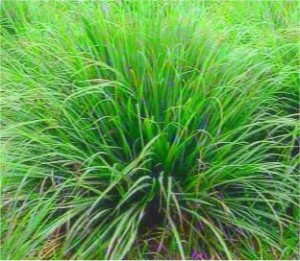
Lemongrass This plant has a fresh lemony fragrance that is appealing to most people, but that mosquitoes absolutely hate. It is the main source of many commercial repellents and repellent lanterns, torches or candles.
Lemongrass can be grown by seed but it’s a lengthy process. If the planting area is a garden or patio, grow this grass behind small shrubs & flowers. Otherwise plant along seating areas or walkways. Better is to grow them in pots which can be brought indoors as the plant is sensitive to cold temperatures.
The quickest way to grow lemongrass is by purchasing a mature bundle of it through any preferred produce spot, Asian store or grocery store.
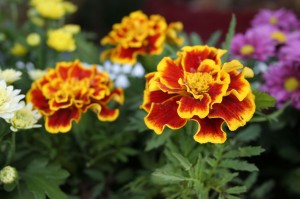
Marigold Commonly grown as ornamental border plants, marigolds are hardy annual plants which have a distinctive smell which mosquitoes, and some gardeners, find particularly offensive. Marigolds contain Pyrethrum, a compound used in many insect repellents.
Potted marigolds can be positioned near entrances to your home and any common mosquito entry points, such as open windows. The smell may deter mosquitoes from going past this barrier. While marigolds can be used as border plants around the patio, we do not advise putting marigolds on the patio table since the bright blooms may attract wasps.
Besides repelling mosquitoes, marigolds repel insects which prey on tomato plants, so you may want to plant a few marigolds in your tomato bed for added protection.
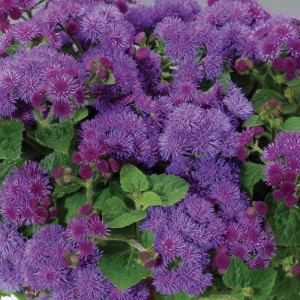
Ageratum Also known as Flossflowers, Ageratum emits a smell which mosquitos find particularly offensive. Ageratum secretes coumarin, which is widely used in commercial mosquito repellents.
Ageratum is a low-lying annual ornamental plant which reaches heights of 8 – 18”, and is easily recognized by its blue flowers, although there are varieties with pink, white and violet blooms.
This plant will thrive in full or partial sun and does not require rich soil. It is often displayed in rock gardens where low-lying plants are favored.
Although the leaves of Ageratum can be crushed to increase the emitted odor, it is not advisable to rub the crushed leaves directly on the skin.

Rosemary This herb is awesome for cooking, but did you know that it’s great for repelling mosquitoes, too?
Rosemary likes a Mediterranean climate, so it thrives in well draining soil and full sunlight. It’s easy to grow and doesn’t require much water. If you live in a warm climate, your rosemary will even survive the winter. If you live in a climate where the winter dips below 30 degrees F, plant your rosemary in pots so that you can bring it indoors during the winter.
Rosemary is technically a shrub and can get quite large, so trim it frequently.
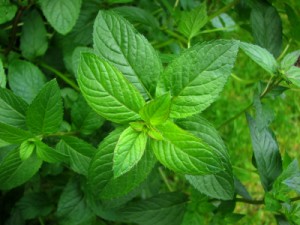
Mint Why it is mosquitoes don’t like the refreshing, delicious scent of mint? It gives off a strong incense-like odor which confuses mosquitoes by masking the smell of its usual hosts.
Mint is a very hardy plant that grows rapidly in the ground or in pots. You can pick mint leaves and rub them on your skin as a mosquito repellent, or just include the plants in your landscape.
Mint leaves can be dried and used to make herbal tea. Its flowers will also attract bees and butterflies to your garden.
As a bonus, mint is also great for cooking and makes refreshing summer cocktails.
As you can see, these are just a sample of a few different plants out there that can help to keep bugs away! For more information and a list of plants that repel pesky mosquitoes contact DK Landscaping (707) 280-3632. So the next time you reach for the chemical bug spray, take a minute and think again, and choose something more natural!
Stop and Smell The Flowers!!
Flowers! From incredible wedding bouquets and beautiful Mother’s Day arrangements to blooms we offer in the hope of soothing hurt feelings, there are many occasions and reasons for why we plant them and offer them as gifts. So As you begin to paint the picture of your landscape plan, take a moment to consider their meaning before you begin to plant. Here are a few of the most popular floral choices and the meaning that they convey:
Roses 
There is no flower that has been revered and celebrated as much as the rose. As a source of inspiration to people throughout history, roses are the definitive symbol for love and appreciation, but the different colors also have a meaning all of their own:
Yellow roses mean joy ~ Red roses mean passion ~ Burgundy roses mean unconscious beauty ~ Orange/coral roses mean desire ~ Red and white roses together mean unity ~ Pink roses mean grace and gentility ~ White roses mean worthiness
Orchids
With an exotic appearance, orchids have come to represent rare and delicate beauty. Those seeking to make a lasting impression with a unique flower have found the orchid to be a perfect choice. As both potted plants and cut flower arrangements, these tropical flowers have an undeniable appeal. Different cultures throughout history have believed in the healing, disease-fighting and protective properties of the orchid. In traditional Chinese medicine the orchid is used to help cure coughs and lung illnesses. The ancient Greeks associated it with virility, and the Aztecs were said to drink a mixture of the vanilla orchid and chocolate to give them power and strength.
Lily 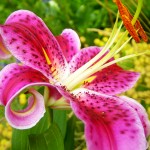
A very common flower at funerals, lilies also symbolize virtues such as purity, sweetness and friendship. The Greeks believed the lily sprouted from the milk of Hera, the wife of Zeus. White lilies signify purity and sweetness, day lilies symbolize coquetry and yellow lilies can mean falsehood or gaiety. Lilies of the Valley mean a return of happiness.
Iris Flowers
Few other flowers can match the elegant beauty of the iris. Representing faith, hope, and wisdom, the iris is a flower that can be used for many different occasions. While it is most known for its distinctive blue varieties, the iris can also be found in other colors such as yellow and white.
Tulips
With their flower meaning being perfect love, tulips can impart a sense of grace and elegance wherever they are displayed. The tulip is recognized throughout the world as one of the most popular cultivated flowers, but they are particularly associated with the Netherlands. Dutch tulips are among the leading tulip varieties within the floral community.
Carnation
As one of the most popular flowers in the world, the carnation is widely appreciated and enjoyed. Carnations are available in a variety of colors and are generally symbolic of love and fascination.
- Red carnation symbolizes love, pride and admiration
- Pink carnation symbolizes the love of a woman or a mother
- Purple carnation symbolizes capriciousness;
- Yellow carnation symbolizes disdain, rejection or disappointment
- White carnation symbolizes innocence and pure love
- Striped carnation conveys refusal
DK Landscaping are your landscaping and gardening experts. If you need a company to spruce up your existing landscape or custom design one, call us.. DK Landscaping serves Petaluma, Cotati, Rohnert Park, West County, Santa Rosa and Windsor areas. Call us today ![]() 707.280.3632.
707.280.3632.
Goodbye Summer. Hello Autumn!

Autumn is officially here in Sonoma County! When we think of the season, we think of vibrant foilage, crunchy leaves, the smell of crisp sweet air, pumpkins, hot apple cider and Halloween. But as we get further into the season, the sunlight begins to wane, the nights are chillier, our trees are more bare and the landscape looks tired. It’s easy for us at this point to hang up our boots, turn our backs on our landscape and take up shelter for warmth. But the reality is that Autumn is the most ideal time to tend to our lawns and prepare it for the harsh winter ahead to ensure it’s in the best of health for a springier spring. Here are DK Landscaping’s top tips to winterize your landscape:
Mow & Mulch
Mow your lawn into the fall and avoid removing more than one-third of the leaf blades with each cut. Return grass clippings and back to the soil for added lawn nutrients and use tree leaf compost to nourish plants. That will allow more sunlight to reach the crown of the grass, and there will be less leaf to turn brown during the winter.
Aerate & Prune
Aerating is a lawn process that puts small holes into the ground to allow air, water, and nutrients to transcend into the ground and allows you to remove unwanted weeds from manifesting. Help your lawn breathe through fall core aeration to strengthen roots and to prepare for a hardy spring workout. Conduct corrective pruning of trees and shrubs in fall to enhance plant appearance and vigor, and thin rather than top-shear and overgrown shrubs and flowering trees to preserve their overall shape.
Rake those Leaves
Don’t wait until all the leaves have fallen from the trees to start raking. If you do, the leaves will become wet from rain and morning dew, stick together and form an impenetrable mat that, if left there, will suffocate the grass and breed fungal diseases.
Feed for the Winter
A good fall feeding gives roots of lawns, trees and shrubs the energy needed to prepare for a healthy spring green revival. Keep fertilizer on target to prevent run-off and sweep fertilizer granules that may reach pavement back onto your lawn.
DK Landscaping is your Sonoma County lawn experts. We have all the tools, experience and are backed by 10 years trusted guaranteed service. Give us a call so we can help make your lawn beautiful! For a full list of services, please contact Kathy Lee at (707) 280-3632 or contact us by email, davidmunlee@aol.com.
Springing Forward
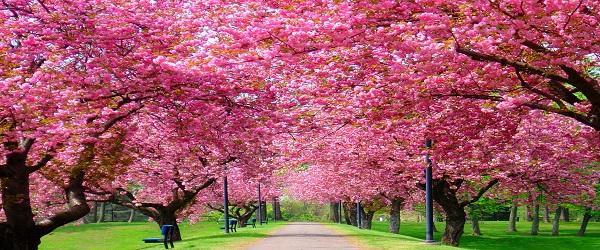
Spring is an exciting and one of the most beautiful times of the year. The days are becoming longer, the weather is getting warmer, you awake to birds chirping in the morning, and spring blooms and lush green plants come alive in your landscape.
After a long winter, your lawn and gardens may be looking a big ragged and dreary. So before you pull out your lawn furniture from storage, get in the “spring spirit” by getting your yard looking spectacular. Help your lawn, trees and shrubs get off to a healthy growing season with these six luscious landscaping tips:
1. ASSESS YOUR TOOLS: Check, maintain, sharpen and repair your landscaping tools for a smooth spring and summer experience. This includes your lawnmower, weeding/pruning tools, rake and edger.
2. CLEAN UP: Clean out dead leaves, branches, trash or anything else that could impair your garden and lawn’s growth. Prune
3. WEED CONTROL: Uproot any existing weeds you find out of flower beds and check your lawn for any weed growth, whether they’re leftover stalks from last year or brand-new shoots. Once weeds are clear, DK Landscaping recommends spending between 10-15 minutes a few times per week to prevent new weed growth in your garden.
4. FERTILIZE: Make sure your early spring fertilizer has less nitrogen and more phosphorus to promote strong roots. Be sure to keep fertilizer on target to prevent run-off, and sweep fertilizer granules that may reach pavement back onto your lawn. Give your lawn a slow, steady watering about once a week, but adjust depending upon rainfall, grass and soil type in your area.
5. MULCH: A fresh layer of mulch can take any flower bed from drab and dreary to beautiful. DK Landscaping suggests applying four inches of mulch over the top soil, which will help retain moisture and prevent growth of those pesky weeds.
6. IRRIGATION: Check your in-ground sprinkler system and make sure all your sprinklers are working properly. Remove any overgrown grass that may have covered up any part of the pop-up heads. Check the sprinkler heads for cracking and breakage from last year and have them replaced if needed.
It’s the perfect time in Northern California to gather up tools, slide into your boots, pull on your garden gloves, and enjoy that first breath of spring.
DK Landscaping specializes in landscape maintenance, irrigation, clean-up and colorscape in Sonoma County. Contact Kathy or David Lee for more information and a consultation on your landscaping (707) 280-3632.
Protecting Your Landscape From Frost Bite
The temperatures in Northern California are beginning to drop which means winter will be before us, before we know it. Night time temperatures that get down to freezing and below will damage some trees and plants if you don’t take precautions against frost. These low temperatures can begin late November and continue through February and beyond.
DK Landscaping helps you prepare your landscape and provides tips to protect your delicate plants from frost bite.
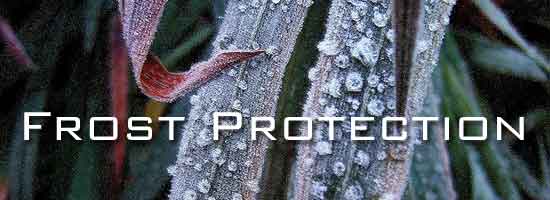
WINTERIZE
Fall is prime time to clean up your landscaping and remove the dead landscaping before it gets too cold. Removing dead plants can also stop the growth and spread of fungi that could infect your plants’ new growth in the spring.
PLANT
Planting trees and shrubs in the fall is a an optimal time before the first frost arrives and best time to take advantage on some great end of the season deals. Planting in the fall gives roots plenty of time to become established before the next growing season begins. Not only will you get to enjoy the changing leaves for a brief time, you will also put less stress on your young trees because of the cooler weather and rain conditions fall offers.
MULCH
Mulching can be a great first step in preparing for winter’s frost. If you are unfamiliar with mulching, check out our previous blog post called Mulch About Fall. There are many benefits to mulching your lawn and plants, especially before winter. Mulching in the fall can help protect your plant’s roots as well as help them retain moisture during the cold, dry winter.
Just a few preparations for winter can guarantee that your landscaping will come back fresher than ever in the spring.
For more information on the care of your landscape, please contact David or Kathy Lee from DK Landscaping (707) 280-3632.
The Art of Irrigation
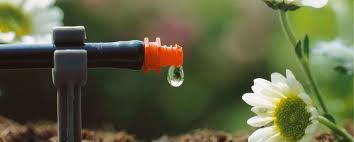
One of the challenges for a gardener is managing the proper use of water. The lack of water can be damaging, or deadly, to anything growing outside. DK Landscaping shares the art of irrigation and will help you prepare your garden for it.
Benefits of Drip Irrigation
By using drip irrigation, your garden will use less water, will require less maintenance, and help discourage less weeds and pests. You will be giving them the moisture they need, where they need it: at their root zone.
It will save you up to 90% compared to watering with a hose. It saves you time having your drip system on a timer. You control your irrigation timer and adjust it for seasonal changes (for instance, August heat in Northern California consumes the most water). Together with mulch creates an organic weed control without the use of harsh and unhealthy chemicals. Watering only the roots of your plants with drip irrigation also cuts down on water-borne pests and fungal diseases that spread by water movement.
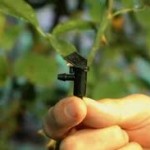
With a timer, you can control how much water your plants receive by setting up your drip system with different size emitters, which are the system’s delivery mechanism. You can use a small emitter, such as one that delivers 1/2 gallon of water per hour, at the base of small plants, such as herbs; for larger plants, such as trees, you can provide more than one emitter that delivers 3 gallons of water per hour, or more.
DK Landscaping also recommends that all valves feeding the drip system should have:
Large Filter: A small filter or no filter will result in debris clogging the system.
Pressure Reducer: Absence of it will result in emitters being blown off the main feed line. Drip systems are designed to work under low pressure (nominally between 25 PSI to 35 PSI) while normal pressure on the water main line is nominally 70 PSI.
Pressure Compensated Emitters: Pressure compensating drip emitters (PC Emitters) deliver a consistent output of water, even with increase changes in elevation or pressure due to long drip runs. PC Emitters are best used in landscapes and gardens that have drops in elevation that would cause an increase in pressure.
Emitter Hole Punch: Oval or wrongs size holes will result in leaks.
For more information and a free consultation on your irrigation system, please contact Kathy Lee at DK Landscaping. Kathy is our QWEL (Qualified Water Efficient Landscaper) Certified Irrigation Expert. We are also a certified WaterSense Partner. QWEL and WaterSense are certified by the EPA.






